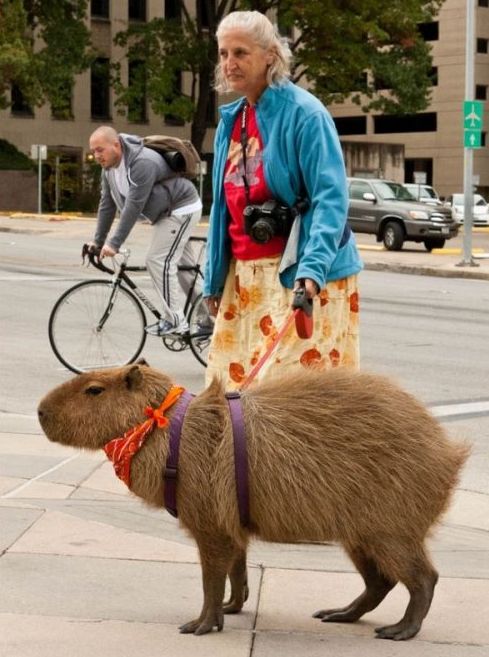There is a lot of work going around the planet to protect the ecosystem and animals occupying them from getting extinct. Today, many species of animals and other creatures have already got extinct or are at the verge of getting extinct due to change in climate, habitat loss and poaching. Now the question that looms before us is, what will exactly happen if the bigger mammals gets eventually extinct. Scientists are of the view that with the extinction of the bigger mammals from the ecosystem, giant rats as big as a cow would replace their ecospace.
Difficult To Eradicate The Rodents
Jan Zalasiewicz from the Department of Geology at the University of Leicester said that we humans have helped rats to spread to different part of the earth and now they are found on almost on all the island of the earth, living comfortably in the new environment. They are so well versed with the environment around them that it is impossible to eradicate them now. They compete with native species and even push them to extinction, completely occupying the territory. Similarly, as the ecospace continues to get emptied – rats are in a situation to occupy a major part of it in the coming future.
Rats continue to live longer than their present environmental enemy and this trend will subsequently lead them to encounter evolutionary adaptation including gigantism, said Zalasiewicz. He further adds that the animals continue to evolve, that enable them to outlive and to breed successfully. For example, during the Cretaceous Period, when the dinosaurs used to rule the planet and used to occupy substantial ecological niches, there were other mammals living too but they were reduced in size such as rat and mouse sized. As soon as dinosaurs got extinct that these rat sized mammals eventually evolved into various forms, including large ones as horses, mammoths, rhinoceri, brontotheriums and so on. Even some 50 million years ago, the distant forefather of the largest mammal alive today, the blue whale, were just about the proportion of a wolf.
Zalasiewicz says :
Given enough time, rats could probably grow to be at least as large as the capybara, the world’s largest rodent, that lives today – that can reach 80 kilos [176 pounds]. If the ecospace was sufficiently empty, then they could get larger still.
But this does not mean that all the rats in the future will grow into giant proportions, Zalasiewicz says that rats will undergo many different varieties of evolutionary adaptations in the future resulting in tiny as well as bigger sizes. These depend on the selective pressure that animal face when in a particular circumstance. The animals have an adaptability that is most probably next to that of humans.
Different Environments Will Act As A Laboratory
Therefore, each island on which rats are living can be seen as a laboratory for the future evolution and each of them will give unique results in the future, such as slow rats, fast rats, tiny, thin rats, heavy rats or even aquatic rats and so on. Other animals such as domestic cats, goats, rabbits and others are likely to follow the same trend.
Zalasiewicz acknowledges that the rats will have a major influence on the geological future and the most adaptable animals will give place to astounding descendants and will become crucial players in the future of the planet. These rodents causes loss of agriculture goods every year, imagine the amount of loss these huge rats could do to our stocks. Then who knows, they would need large entrance and might be visible easily unlike today.
Source: Nature World News




